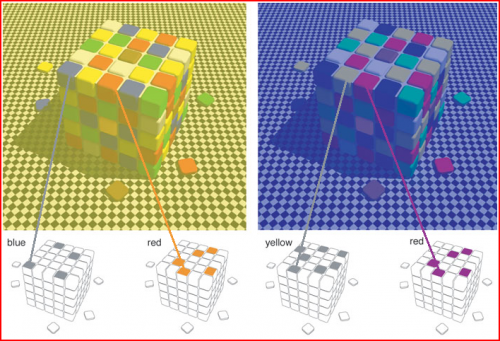-
Posts
111 -
Joined
-
Last visited
About Lizzie L
- Birthday 03/08/1952
Contact Methods
-
Website URL
http://theskepticalzone.com/wp/
Profile Information
-
Location
UK
-
Interests
life, the universe and everything
-
College Major/Degree
PhD in cognitive psychology
-
Favorite Area of Science
neuroscience
-
Biography
Originally trained as a musician, then in architecture. Now do research in cognitive neurosicence
-
Occupation
academic research in psychiatry
Lizzie L's Achievements

Baryon (4/13)
17
Reputation
-
Lizzie L changed their profile photo
-

To make new music instruments for to learn acoustics?
Lizzie L replied to science4ever's topic in Amateur Science
I beg to differ -

To make new music instruments for to learn acoustics?
Lizzie L replied to science4ever's topic in Amateur Science
What? The intonation is beautiful! -
I don't have a problem with that.
-
In that case this definition: is circular.
-
Isn't the planck length defined in terms of the speed of light?
-
It does complicate matters enormously, but I think it's very important to keep in mind. I've been to lectures on colour (as an architecture student!) where the lecturer though that the three "primary colours" were a fact of the physics of light. They aren't. They are solely a fact of physiology. Personally, I think it's better to think simply about wavelengths, rather than colour, when thinking about the physics of absorption and reflection. Unless we are talking about the colours of living things, which almost certainly evolved because of vision-possessing other living things, and so their physical properties reflect the vision-properties of their predators/seed-eaters/mates, and we are back to vision physiology again. But I should say: I'm not an expert in colour vision! I do have some knowledge though, as it often turns out to be relevant to stuff I do.
-
And we see white things "because of the absence of all colours". Black pieces of paper, like white pieces, reflect all wavelengths in the visible spectrum (what we call "light") more or less equally. The difference between black and white is the total amount of light reflected, but our perception of the difference between black and white is relative - a black piece of paper with a white light focused on it will look white, if the surroundings are dark. In other words how light or dark a thing looks is different from what colour it looks - colour depends (partly) on whether some frequencies are reflected more than others, whereas darkness or lightness depends on how much light is reflected. But perception, even of colour, is crucially dependent on contrast. A bright yellow thing can look red, or dark brown, or even black, depending on what is being reflected by its surroundings. And we are "trichromats" - we have three kinds of colour receptors, red, blue and green. That means that we can see non-spectral colours like magenta, if an object reflects both red and blue light, but not green. And yellow light, which stimulates both our red and green receptors (because they are fairly broad-band), gives the same percept ("yellow"), all other things being equal, as objects that reflect no yellow light but pure red and green light, as such objects will also stimulate both red and green receptors. In fact objects that only reflect narrow band "yellow" light will tend to look dingy brown, because they only weakly stimulate red and green receptors, whereas objects that both narrow green and narrow red light (or a white surface on which red and green light is projected) will look bright yellow, both red and green receptors will be strongly stimulated. So "yellow" objects tend to be those absorb blue, and reflect a broad spectrum between green and red, including orange and red, whereas red objects tend to absorb everything shorter than red. Green objects are sort of odd - they have to absorb everything both sides of green, leaving only green reflected. Not surprising, then, that green is very much a "life" colour - probably require something like evolution, or very specific crystalisation processes, to produce. Objects devoid of life tend not to look green!
-
Voted yours back up again I was not the person who downvoted post, which probably supports the idea that libertarian principles are largely orthogonal to economic ones. On the Political Compass, I fall firmly in the bottom left corner. You probably fall in the bottom right. So at least we share half our views
-
Yes, I have no answer to that!
-
Does this help? I used the color dropper in Paint to pick up the colour of the blue and red squares on the upper surface of the yellow-filtered image, and the yellow and red squares from the blue-filtered image, then used that colour to draw lines from the squares to the corresponding cells in the line drawings below. Lines, squares and cells in the line drawings are all the same colour. Each line to my eye appears to change colour as you move along it! But the colors are the same throughout. The "blue" square in the yellow picture has RGB values of 142 149 155 and shows up as grey in the line drawing below (my leftmost line). The "yellow" square in the blue picture also has RGB values of 142 149 155 and also shows up as grey in the line drawing below (my second from the right line). The "red" square in the yellow picture has RGB values of 243 154 52, and shows up as yellow (orangey-yellow) in the line drawing below (my second from the left line) The "red" square in the blue picture has RGB values of 150 55 147, and shows up as purple in the line drawing below (my rightmost line) ETA: for some reason the picture renders rather small in the post - try clicking on it to see it full size. Here's another famous one, just for black and white: The squares A and B are exactly the same shade of mid grey (RGB 126 126 126). But A "reads" as black and B as white. And another lovely one: In the picture on the left you see pale blue spirals and lime green spirals, right? But they are both the same colour! On the right is the same picture with the pink and yellow replaced by black, leaving just one other colour, a fairly ordinary green.
-
Yes indeed Yes, I know you are I think your implication reflects a misunderstanding of what liberal politics actually stands for. But I would agree that a lot of people share your [mistaken] view I don't mind what you label me as, and I am happy to wear the "liberal" label with pride, as do many other hard-working people who take their personal responsibilities extremely seriously. Indeed it is because we see ourselves as responsible for the well-being of our fellow human beings, and are determined to ensure that all people gain benefit from the fruits of their labour that we embrace socialist/liberal politics As the old Clause Four of the UK Labour Party used to say, before Tony Blair dumped it: To secure for the workers by hand or by brain the full fruits of their industry and the most equitable distribution thereof that may be possible upon the basis of the common ownership of the means of production, distribution and exchange, and the best obtainable system of popular administration and control of each industry or service.
-
I'm not sure exactly what you are referring, to, but Schneibster is correct that detection of phase-difference in the sound reaching the two ears is helps us locate the sound source in space, although loudness difference is another cue. Here is a google-books textbook page: http://books.google.co.uk/books?id=evbdjAQYA1cC&pg=PA201&lpg=PA201&dq=phase+sound+ears+difference+location&source=bl&ots=zNWELveXgs&sig=xx1rRZsBuxhgswTA4lerQU2joCU&hl=en&sa=X&ei=ekNIU7noCauI7Abgn4DABQ&ved=0CEkQ6AEwAw#v=onepage&q=phase%20sound%20ears%20difference%20location&f=false
-

ITER nuclear fusion for energy production
Lizzie L replied to Mayflow's topic in Modern and Theoretical Physics
When my husband started at medical school he had already done a PhD in plasma physics. At his med school interview, just as it was winding up, they said: "one more question: how far off is fusion energy?" Can't remember what his answer was but that was just over forty years ago! -
I've had success with Steradent.


